Imagine walking out to your garden and picking fresh greens for salad every night for dinner. It can easily become a reality as lettuce is one of the easiest vegetables you can grow. You don’t need a dedicated vegetable garden, it can grow just about everywhere. If you keep lettuce well-watered, shaded from hot afternoon sun, and plant successively you can easily enjoy fresh lettuce most of the year if not year-round.
Types of greens
There are five types of lettuce categorized by head formation and leaf type. Each group offers a different texture and flavor.
Crisphead
Crisphead, or iceberg, lettuce is one of the most common lettuces you’ll find at the grocery store. The lettuce grows as a round, tight head of crunchy, pale leaves. The leaves are one of the thickest of the lettuces and also one of the least nutritious. It is, however, a good source of dietary fiber. This type of lettuce is one of the more difficult varieties to grow as it does not tolerate hot weather, or water stress well and may actually begin to rot from the inside out. Crisphead lettuce is a slow-grower maturing in 70-80 days. This variety grows best in the spring and fall.
Batavian
Batavian lettuce varieties from loose heads of tender leaves with crisp hearts. The outer leaves may be harvested as loose leaf as the head forms. This is one of the best types of lettuce to grow in the summer as it resists bolting, or going to seed, in hot weather. Batavian lettuces mature in about 55-60 days and can be grown all season long.
Butterhead
Butterhead lettuces form loose heads of wavy, tender, dark green out leaves and a crunchy, light-colored heart. You can harvest the entire head or just the outer leaves. They are easier to grow than crispheads and are less likely to bolt in the summer heat. For the most tender leaves grow these types in the spring and fall. Butterheads mature between 55-75 days.
Romaine
Romaine lettuces form upright heads of crisp, dark green outer leaves and lighter-colored inner leaves. These types of lettuces mature in about 55 to 65 days and grow well in fall, spring, and summer. Harvest the whole head when mature or harvest the baby heads for more tender leaves.
Loose leaf
Loose leaf lettuces form no heart or head, but instead grow as clusters of frilly, smooth, or lobed leaves. As a result they are the easiest to grow. The mature in about 50 days, but can be harvested as early as 30 days. You can harvest the whole plant or the leaves as the plant matures. Loose leaf lettuces grow best in cooler weather, so plant in the spring, then again in the late summer for a fall harvest.
When do I plant lettuce?
To harvest lettuce for as long as you can you’ll have to pick different varieties for each season and different cultivation methods. In the winter start with lettuces that form heads. Plant the seeds indoors 4 to 6 weeks before your last frost. Do this weekly for successive growing. As soon as the ground is able to be worked transplant the oldest seedlings and add the next oldest the following week. Continue in this manner until all the seedlings have been planted.
When you plant your first head lettuce seedling sow loose leaf lettuce seeds directly into the ground. The seeds should germinate within 6 to 12 days if the soil temperature is at least 35 degrees Fahrenheit. Pick seeds that are appropriate for cooler weather. These will be labeled ‘cool-season’ or ‘winter mix.’
As the season progress and the weather warms up plant heat-resistant loose leaf lettuce. They are often labeled warm-season mix. Sow the seeds directly in the ground. Place them in a shady location and be sure to water them adequately.
Towards the middle of the summer switch back the head lettuces. Make weekly successive sowings directly in the ground so that you may continue to harvest until the first frost. Make sure you last planting is about 60 days before your average first frost. This will ensure the last crop has time to mature.
If you live in a location with a mild winter you can continue to grow lettuces through the winter if they are covered with cloches. Transplant heads to containers to grow indoors or a greenhouse if you live in a location that experiences harsher winters.
What type of soil do I need and where should I plant lettuce?
Lettuce can tolerate full sun, but does best with a little shade, particularly during the harsh midday sun. Spring varieties will grow longer if provided with a little shade. Lettuce can be grown in containers, flower beds or vegetable gardens. Plant next to taller plants, such as eggplant, peppers, or tomatoes, to offer some relief from the sun. Lettuce plants grow shallow roots and do not compete with weeds well. Make sure the location is free of weeds and can be easily maintained.
Plant in well-draining, fertile soil. Space lettuce heads between 6 and 18 inches apart, depending on variety. The exact distance can be found on the seed packet. They can be planted closer together, however. In which case the leaves will need to be harvested continuously to prevent overcrowding.
Care
The most important thing to remember when caring for lettuce is watering. Lettuce leaves are composed of about 90% water the plant produces shallow roots. As a result, the plants need a moderate, but constant supply of water. They need about 1 inch of water per week. The surface of the soil should be moist, not soggy. Apply mulch to help retain moisture and try to water in the morning so the leaves have time to dry out before the cooler night.
As the weather heats up some varieties of lettuce will bolt. This means the plant begins to produce flower and seeds. Lettuce leaves taste bitter when the plant has bolted. Pull up and discard any plants that bolt. You can slow down this process by pinching off the top of the plant when it begins to elongate and from flowers.
How do I harvest and store lettuce?
Harvest lettuce leaves and heads in the morning to preserve the crispness they acquired over the cool night. The heads may be harvested by pulling the entire plant or cutting the head with a sharp knife below the lowest leaves. If you leave the roots more leaves with grow providing you with more salad greens. Use a sharp knife or scissors to cut loose leaf lettuces right above the soil line. Harvest the outer leaves of baby plants by trimming with a sharp knife or scissors. Don’t pinch the leaves off as it may cause them to bruise. Lettuce tastes best fresh, but can be stored in the refrigerator for up to two weeks. Store the leaves dry and wash before serving.
Troubleshooting
The most common pests of lettuce are aphids, cutworms, and slugs that love to hide on the moist undersides of the plant and down in the crown. Don’t overcrowd lettuce so there is less space for the critters to hide.

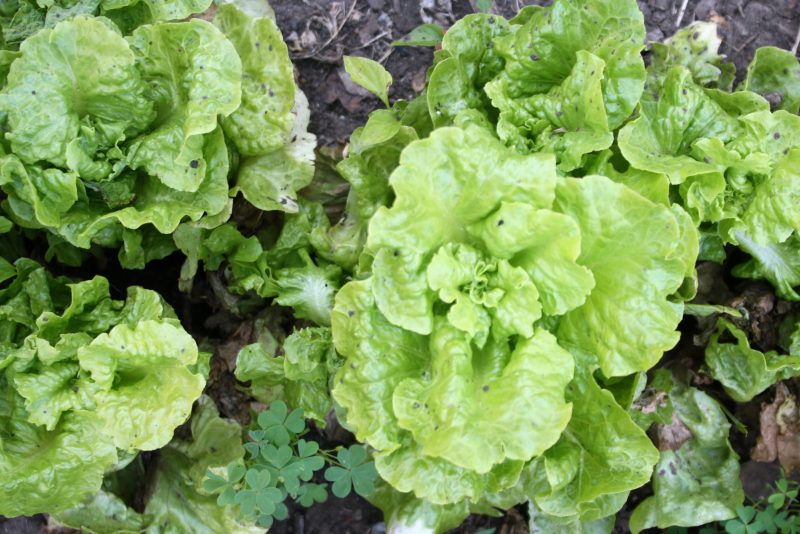
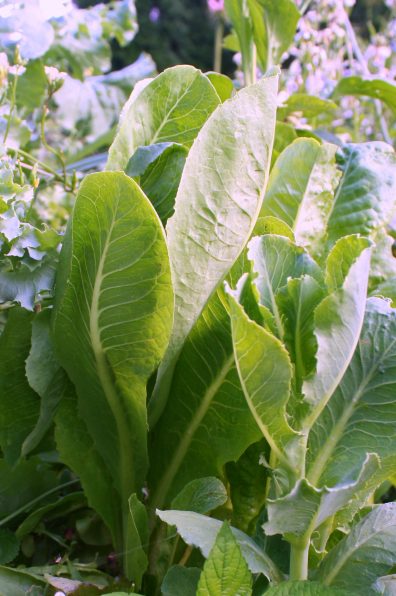
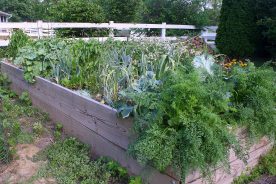
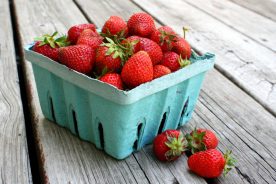
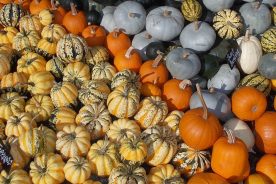

No Comments